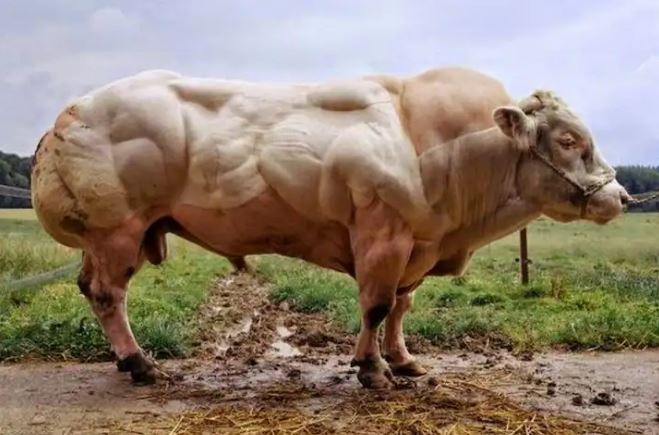In the world of livestock, some animals stand out not just for their size but for their sheer presence and the awe they inspire. Among these giants is the world's biggest bull, a living testament to the extraordinary capabilities of nature and selective breeding. This article delves into the fascinating story of the world's biggest bull, exploring its origins, characteristics, and the broader significance of such a magnificent creature.
The Phenomenon of the World's Biggest Bull
The title of the world's biggest bull has been contested over the years, but as of recent records, the crown belongs to a bull named “Dozer.” Weighing in at a staggering 3,700 pounds (1,678 kilograms) and standing over 6 feet tall at the shoulder, Dozer exemplifies the upper limits of bovine growth. This colossal bull belongs to the Chianina breed, one of the oldest and largest cattle breeds in the world, originating from Italy.
Origins of the Chianina Breed
The Chianina breed, renowned for producing some of the largest cattle globally, has its roots in the Val di Chiana in Tuscany, Italy. Historically used as draft animals due to their immense strength and size, Chianina cattle are now primarily bred for beef. Their distinctive white coats and black-pigmented skin help them stand out, but it's their remarkable size that truly sets them apart. The breed has been meticulously selected over centuries for traits that enhance their growth and muscle mass, leading to the emergence of giants like Dozer.
Characteristics of the World's Biggest Bull
Dozer, the current record-holder, is a prime example of the Chianina breed's extraordinary characteristics. Bulls of this breed are known for their massive frames, muscular builds, and impressive heights. Dozer's daily diet is carefully managed to support his immense size, consisting of a balanced mix of grains, hay, and supplements to ensure optimal health and growth. Regular veterinary check-ups are essential to monitor his health, given the strain such size can place on joints and internal systems.
The Role of Selective Breeding
The achievement of such immense size in bulls like Dozer is not purely accidental; it is the result of selective breeding. Over generations, farmers and breeders have selected cattle that exhibit desirable traits—such as larger size, faster growth rates, and better muscle development. By carefully pairing individuals that display these characteristics, breeders have managed to enhance these traits in subsequent generations. This meticulous process has led to the emergence of exceptionally large animals that capture the world's attention.
The Significance of the World's Biggest Bull
The significance of the world's biggest bull extends beyond mere spectacle. Such animals represent the pinnacle of what can be achieved through dedicated animal husbandry and selective breeding practices. They also highlight the potential for genetic advancements in livestock, which can lead to more efficient meat production, benefiting the agricultural industry globally. Additionally, these colossal bulls serve as a source of pride and accomplishment for the breeders and communities that raise them.
Ethical Considerations
While the sight of a bull as massive as Dozer is undeniably impressive, it also raises important ethical questions. The health and welfare of such large animals must be a primary concern, as their size can predispose them to various health issues, including joint problems and cardiovascular stress. Responsible breeding practices and proper care are crucial to ensuring that these animals live healthy and comfortable lives.
The Future of Giant Bulls
As interest in livestock breeding continues to grow, the future may see even larger bulls emerging. Advances in genetic research and breeding techniques hold the potential to further push the boundaries of bovine size and growth. However, it is essential that these advancements are pursued with a focus on animal welfare and sustainability. Ensuring that the health and well-being of these magnificent creatures are prioritized will be key to maintaining ethical standards in the industry.
Conclusion
The world's biggest bull, exemplified by giants like Dozer, is a marvel of nature and human ingenuity. These colossal creatures not only captivate the imagination but also showcase the potential of selective breeding and genetic advancement in livestock. While they stand as a testament to what can be achieved, it is imperative that their care and well-being remain at the forefront of breeding practices. The legacy of the world's biggest bull is one of awe, respect, and a reminder of our responsibility towards the animals we nurture and admire.





Comments